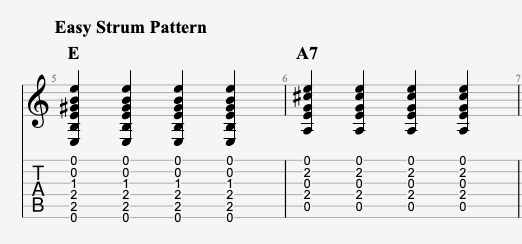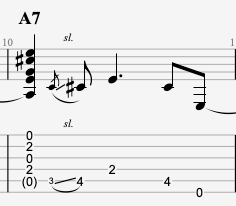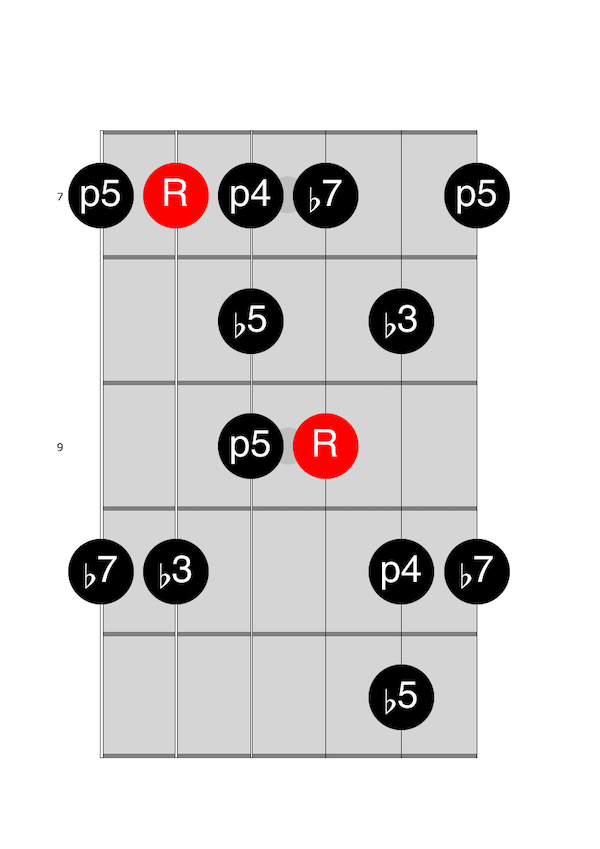For What It's Worth Guitar Lesson (Buffalo Springfield)
One thing so many guitarists would love to be able to do is to play rhythm and then instantly be able to switch over to lead and then back.
To do this, you have to develop your rhythm skills and your picking skills. And then you have to practice navigating going back and forth.
A great way to work on this is to play songs like what I am going to share with you today in this “For What It’s Worth” guitar lesson.
This song only has a couple of chords. In this post, I’ll share how to play the whole thing from top to bottom.
So grab your guitar and let’s get started!
Who wrote For What It’s Worth:
"For What It's Worth" was originally written by Stephen Stills, the lead singer and guitarist of the band Buffalo Springfield. It was recorded in Los Angeles in 1966, and released on their debut album Buffalo Springfield the following year.
While often considered an anti-war anthem, the song was actually inspired by the Sunset Strip curfew riots in Los Angeles that same year. These clashes between police and young people on the famous strip were a turning point in the counterculture movement, and Stills captured the tension and unease of the time in his lyrics.
- Songwriter: Stephen Stills
- Band: Buffalo Springfield (performed and recorded the song)
- Producers: Barry Friedman and Terry Melcher
- Released: 1967 on Buffalo Springfield's debut album
- The song peaked at #7 on the Billboard Hot 100 in 1967
- It also made the list of Rolling Stone's "500 Greatest Songs of All Time"(#59)
For What It's Worth Guitar Lesson Chords
To play “For What It’s Worth” you’ll only need to know 3 chords E, A7, and D. All of these chords will be played in open position. Let’s take a look at each shape here.
E is played using all 6 strings like this:

A7 is played from the 5th string down and using 2 fingers like this:

Finally, D is played from the 4th string down like this:

For What It's Worth Strumming Pattern
The intro and Verse sections follow the same chord progression. One bar of E to one bar of A7. For the Verse, this will repeat 4 times for a total of 8 bars:
E (1 bar)
A7 (1 bar)
Repeat x4
A great strumming pattern to use here is a quarter-note strum.
Start with all downstrums and play 4 on each chord. Begin with a downward strum on the count of "one." Aim for a clean, consistent motion across all the strings.
Like this:
E
1 2 3 4
A7
1 2 3 4

Verse Riff
If you want to get fancier, you can try adding in this bluesy bass line riff in between the chord changes. This is going to help you with what I mentioned above playing rhythm and incorporating more single note lines and riffs.
Start by strumming the E chord. Then slide into the note C# on the 4th fret of the 5th string. Then hit the E high octave on the 2nd fret of the 4th string. Then walk back to C#, and then the open A string like this:

After the open A string is ringing out, then strum the A7 chord and repeat the riff over the A7 chord like this:

This continues throughout the Verse and creates an interesting rhythm guitar part underneath the lead vocal.
Next, this brings us to the…
Chorus
The chorus is where we’ll bring in the final chord D, which we have not used yet. The chorus is where the lyrics sing…
“It's time we stop
Hey, what's that sound?
Everybody look, what's going down?...”
The chorus is only 2 bars long. It’s a quick refrain that starts with a split bar E to D.
E, D (1 bar)
And then it’s followed by another split bar of A going back to E.
A, E (1 bar)
The rhythm here changes from a quarter-note strum (like what we played in the Verse) to a more syncopated strumming pattern.
DISCLAIMER: There’s a live version on YouTube where it sounds like the band is playing a C in the second bar. But on the original recording, I don’t hear a C. So depending upon what version you want to play that would add one extra chord.
A, C (1 bar)
Next, let’s move on to the…
For What It's Worth Guitar Solo
The guitar solo on For What It’s Worth is primarily based on the E minor blues scale. The whole solo uses this scale, except for one note which I explain in the video above.
The solo happens over the Verse progression.
The E minor blues scale is a six-note variation of the minor pentatonic scale.
It takes the minor pentatonic scale (E, G, A, B, D) and adds a "blue note," the flattened fifth (Bb).
This Bb creates a characteristic dissonance or "blue" feeling, which is central to a blues/rock sound.
Here is how I would play it in the 7th position:

- The E minor blues scale follows the formula: 1, b3, 4, b5, 5, b7 (E, G, A, Bb, B, D).
- The flattened fifth (Bb) is the key interval, providing the "blue" tension.
- The minor third (G) also contributes to the bluesy feel by creating a melancholic sound.
The E minor blues scale is not just limited to blues music. It adds color and emotion to rock, jazz, and even pop genres.
You can use it to solo over blues progressions, create riffs and licks, or even build entire chord progressions. Understanding the intervals and how they interact within the scale will deepen your appreciation for its unique sound.
Conclusion:
Bottom line, "For What It's Worth" is a ton of fun to play on guitar, and you’re friends will love it when you play it for them!
Take your time with chords, strumming patterns, riffs, and even the bluesy solo we’ve covered.
Remember, practice is key. Start slow, master the basics, and gradually add in the fancy flourishes like the walking bass line and blues licks.
Don't be afraid to experiment and find your own feel within the song's structure.
As Stephen Stills himself said, "If you can't play the song like me, just play it like you."
And who knows, maybe your version will inspire the next generation of guitarists to pick up their instruments and ask, "How do I play that?"
Keep it up and for another great bluesy guitar lesson check out this Mustang Sally guitar lesson or Suspicious Minds guitar lesson next.
Like this blog post? Get Jon’s best guitar lessons straight to your inbox.
